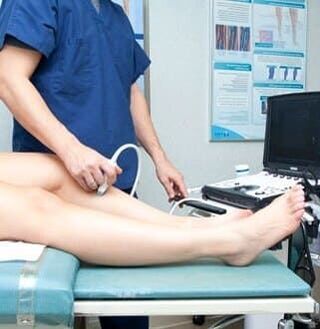Varicose veins are a condition in which a person suffers from a defect in the veins, as a result, blood clots, knots and blood clots form. Blood through the veins does not flow in a continuous flow, but rises over time with the heart rhythm. Along the veins there are valves that do not allow venous blood to flow in the opposite direction. In valve violations, the increase in blood is difficult, stagnation begins and varicose veins develop. Symptoms of varicose veins on the lower part of the legs can be seen with the naked eye. Consider what are the dangers of this disease, how to treat varicose veins in women and men, and doctors who treat varicose veins in the legs.
The cause of varicose veins
The disease is surrounded by many myths that persist even among doctors. After noticing the symptoms of varicose veins, the patient rejects an inactive lifestyle or, conversely, enhanced sports. But in all important studies, no correlation was found between physical activity and the development of varicose veins. Not moving at all or getting excited with exercise is actually useless, but this has nothing to do with varicose veins.
To define a risk group, the following factors must be considered:
- old age;
- belonging to the female gender;
- overweight;
- family history (genetic predisposition);
- smoking;
- multiple births.
The effect of saunas and baths on the development of varicothrombophlebitis has not been proven. This means you can visit the steam room, and varicose veins will not affect you. And you can avoid thermal procedures, but the disease will be real.
A causal relationship between the use of oral hormonal contraceptives and disease progression has not been established. It is believed that wearing tight clothing and high heels interfere with venous outflow, so many doctors recommend choosing comfortable shoes.
How to identify varicose veins
The symptoms of varicose veins on the lower part of the legs are difficult to confuse with other diseases. To:
- swelling and pathological fatigue of the limbs, a feeling of stiffness and heaviness, which is sometimes accompanied by itching;
- appearance of spider veins and bulging veins;
- in further cases - discoloration of the skin, the appearance of ulcers and dermatitis.
The danger of this disease is that blood clots can form in the damaged area. Disconnected, they, along with blood flow, enter the lungs. And this is already a dangerous condition, because thromboembolism can lead to death. To avoid death, you should pay attention to the symptoms of varicose veins on the internal veins: swelling of one leg and changes in varicose veins - if previously not painful and tender, but now purulent, this is a reason for immediate medical treatment.
It should be noted that the symptoms of varicose veins in men and women do not differ, but special monitoring is required during pregnancy. Pregnant women often experience complications, so it is important to properly assess the risk of thrombosis and prescribe competent treatment.
How to treat leg veins with varicose veins

One of the common myths is that varicose veins can be cured with ointments. When you search for "how to treat varicose veins" you can find hundreds of pages that lead to sites with remedies for varicose veins.
The ointment reduces fatigue and swelling, but does not eliminate cosmetic defects and severe complications.
With mild levels of illness, wearing compression stockings and gymnastics helps.
For thrombosis, anticoagulant medications are prescribed, but only if there is no risk of hemorrhagic complications.
In severe cases, only surgery helps. Depending on the symptoms, one of three methods can be prescribed: sclerotherapy, phlebectomy, or endovasal removal. The most frequent and successfully used laser destruction is a saving technique in which the veins are "welded" and excluded from blood flow. Within a few hours after surgery, the patient can return to his or her normal way of life, although the use of painkillers is not required.
Which doctor treats varicose veins
At the first symptoms of varicose veins in the legs, you should contact a phlebologist. The doctor who treats varicose veins will prescribe some diagnostic procedures, especially duplex scans, so as not to miss deep vein thrombosis. Then conservative treatment, minimally invasive procedures or surgery are prescribed. Whatever symptoms of varicose veins bother you, do not neglect a visit to the doctor - it can save your life.

















